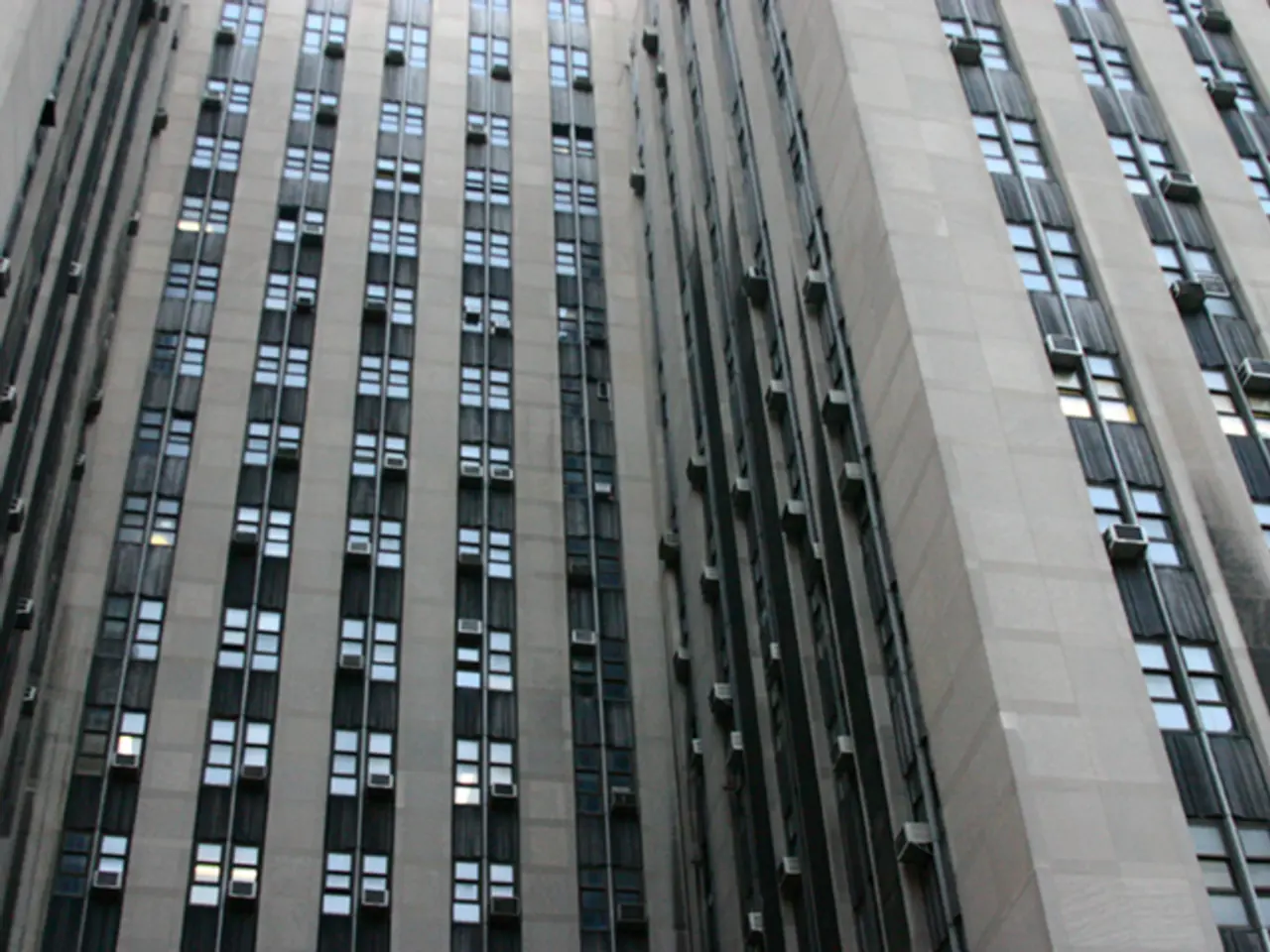Power grid under strain due to heatwave prompts Iran to order office shutdowns
Iran is grappling with a severe heatwave and drought, leading to increased power consumption and depleted water reservoirs. To manage the crisis, authorities have ordered widespread closures of government offices, banks, and schools across multiple provinces, including Tehran, West Azerbaijan, Ardabil, Hormozgan, and Alborz [1][2][4].
The heatwave, ongoing since mid-July, has strained Iran's power grid, leading to rolling blackouts nationwide [1][2]. In response, the energy ministry has requested that public offices close or operate on reduced hours to manage energy consumption in the water and electricity sectors [2][4].
In Tehran, authorities have lowered mains water pressure to manage falling reservoir levels caused by the worst drought in a century and record-low rainfall [2][3]. This has resulted in intermittent blackouts of about two hours every other day, with experts warning of longer outages if demand is not further controlled [1].
Residents have been urged to avoid outdoor activities during peak heat and to conserve water and energy in response to temperatures exceeding 40°C in Tehran and over 50°C in southern cities like Abadan [1][2][3].
The shutdowns have effectively reduced power demand significantly, with a previous shutdown cutting national power demand by 19,000 megawatt-hours and lowering Tehran's water usage by 3,800 liters per second [4].
Experts warn that without widespread consumption reductions, Tehran’s dams and reservoirs risk running completely dry by early autumn [3]. Authorities are considering formalizing extended or recurring shutdowns such as three-day weekends or full summer weeks off to further manage demand [4].
Years of U.S. sanctions and difficulties obtaining parts have hindered maintenance and upgrades to Iran's aging and inefficient energy infrastructure, limiting the ability to meet peak power demand, which exceeds current capacity by approximately 18,000 megawatts at peak times [1][5].
The closures are part of a broader effort to conserve resources during the heatwave, with emergency and frontline services remaining open [1]. Overall, Iran’s approach to managing the crisis involves emergency consumption reductions through institutional closures and water rationing, alongside calls for public cooperation to mitigate extreme stress on its energy and water systems during this unprecedented heat and drought event.
References:
[1] Associated Press. (2021, August 11). Iran faces blackouts as heatwave strains power grid. ABC News. https://abcnews.go.com/International/wireStory/iran-faces-blackouts-heatwave-strains-power-grid-79939012
[2] Al Jazeera. (2021, August 11). Iran's heatwave: Power cuts, water shortages as temperatures soar. Al Jazeera. https://www.aljazeera.com/news/2021/8/11/irans-heatwave-power-cuts-water-shortages-as-temperatures-soar
[3] BBC News. (2021, August 11). Iran's water crisis: The dams that could run dry. BBC News. https://www.bbc.com/news/world-middle-east-58103782
[4] Reuters. (2021, August 11). Iran orders office closures to save power as heatwave strains grid. Reuters. https://www.reuters.com/world/middle-east/iran-orders-office-closures-save-power-heatwave-strains-grid-2021-08-11/
[5] The Guardian. (2021, August 11). Iran's energy crisis: why the power grid is struggling to cope. The Guardian. https://www.theguardian.com/world/2021/aug/11/irans-energy-crisis-why-the-power-grid-is-struggling-to-cope
- The heatwave in Iran, which began in mid-July, has put a significant strain on the country's energy sector, especially in the middle of its climate-change crisis, with temperatures exceeding 40°C in Tehran and over 50°C in cities like Abadan.
- The Iranian government's response to manage the energy crisis includes the closure of public offices and schools across multiple provinces, including Tehran, in order to conserve energy in the water and electricity sectors.
- In an effort to save resources and manage falling reservoir levels caused by the worst drought in a century, authorities have reduced the mains water pressure in Tehran and urban areas, which has resulted in intermittent blackouts of about two hours every other day.
- Given the severity of the ongoing heatwave and drought, and to control the demand on Iran’s energy and water systems, experts are considering formalizing extended or recurring shutdowns, such as three-day weekends or full summer weeks off, to help manage the situation effectively.








